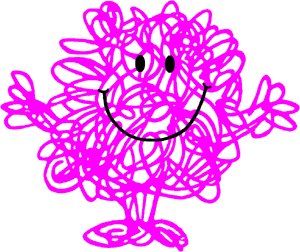Messy, wicked and tame problems
Not all problems are created equal, thus not all solutions are equal. A complex problem like global warming doesn’t require the same kind of problem- solving process and tools as how to generate ideas for the latest handset day in, day out. There are thousands of creativity tool options (a simple Amazon search on the subject lists 2,200 titles on the subject) but the killer application is applying the appropriate creativity tool to the appropriate problem.
So what type of problem are you facing?
Hancock (2010) identifies different kinds of problem categories:
- Tame problems are convergent by nature and will deliver a single best possible solution… can be solved by breaking down into constituent parts; each solved in isolation. Tame does not mean simple.
- Messy problems are clusters of interrelated or interdependent problems, or systems of problems. Are puzzles; rather than solving them we resolve their complexities.
- Wicked problems have an evolving set of interlocking issues and constraints – no definitive statement of the problem.
As Ackoff says “We fail more often because we solve the wrong problem than because we get the wrong solution to the right problem”.
Defining the problem is the first and key element to many creativity and innovation models including Isaksen Creative Problem Solving (CPS), Six Sigma, Stage Gate and Design Thinking (as championed by IDEO and many others). There are also many tools to help achieve clarity of problem statements including Kipling questions, root cause analysis and reframing.
So before you dive into the latest brief, challenge or issue you have to work on, first establish what kind of problem it is, what sort of people might be best to solve it and what tools you have in your kit bag that might help you. Do you know whether the people you have on your creative team like convergent or prefer divergent thinking? The big picture or the detail? I’ve worked on 1,000’s of briefs and challenges in my time and I wish I’d spent longer getting the bottom of the problem whether using insight, field work or good old fashioned thinking time before diving in.
Just knowing that problems can be categorised differently was really helpful to me because it allowed for a richer conversation with the people I was working with. Getting the problem right at the start might take a little time but will save you hours of hair pulling, nail biting and angst in the long term.

